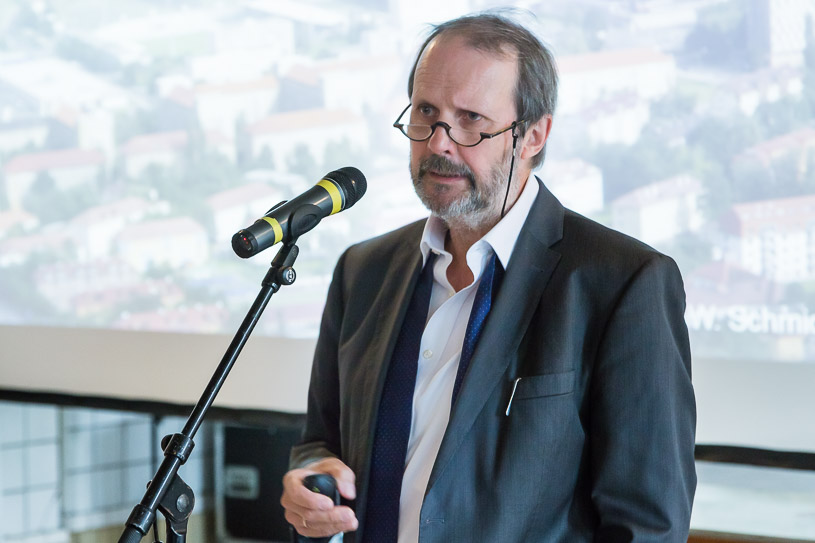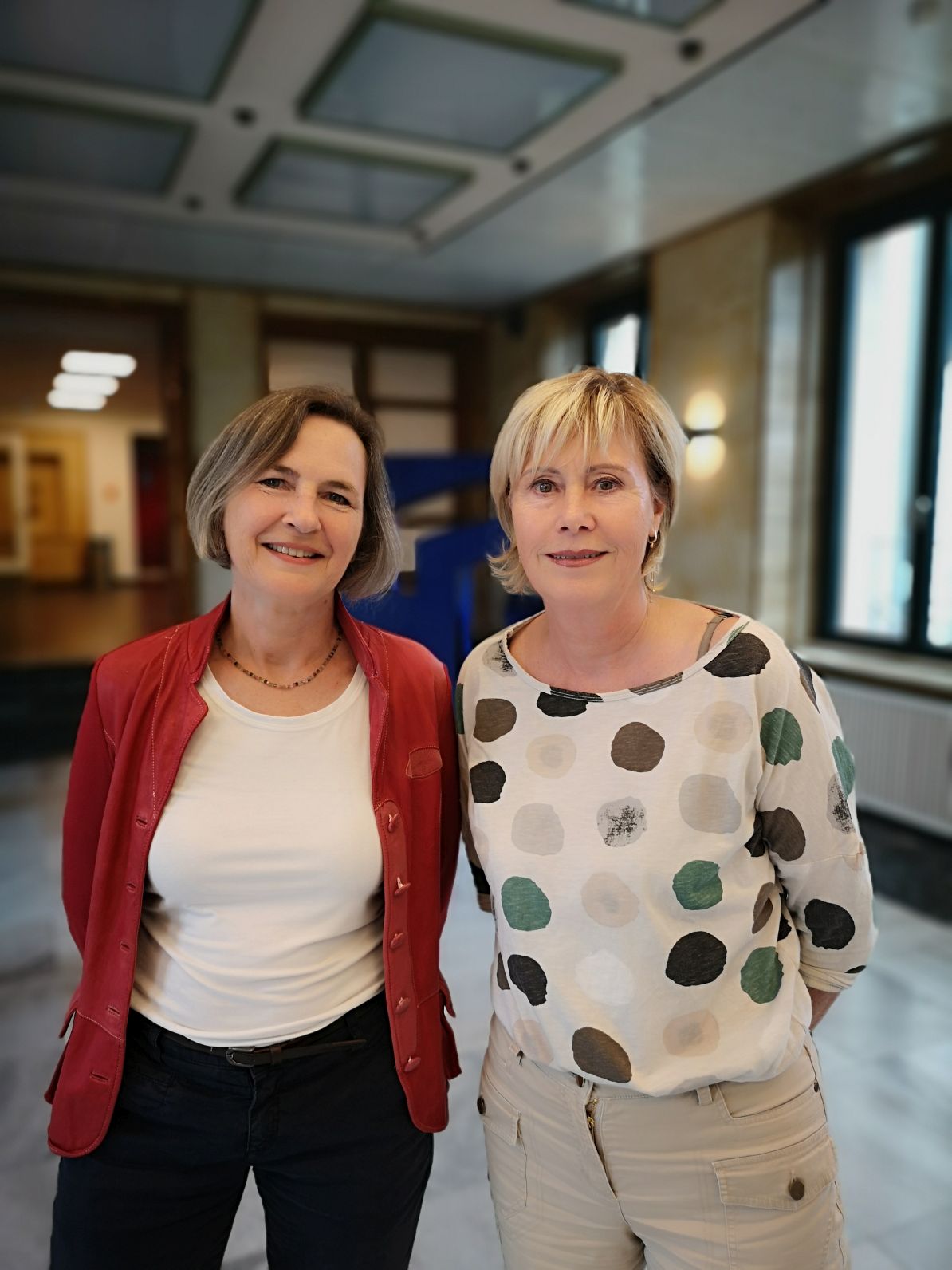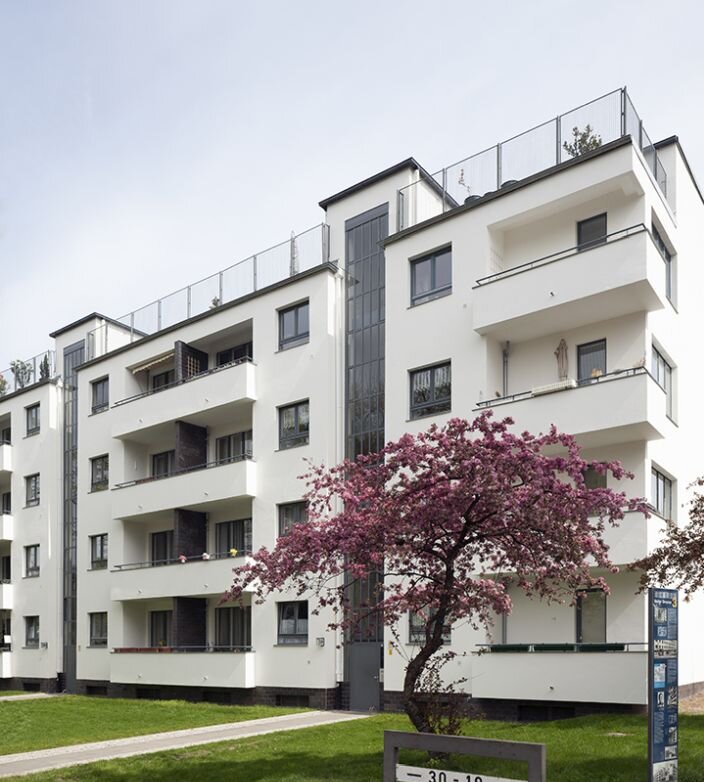‘Deutsche Wohnen is the custodian of a magnificent heritage.’
One hundred years ago, Walter Gropius founded a famous art school in Weimar: the Bauhaus. Bauhaus architecture, a form of Neues Bauen, played a crucial role in shaping urban development. This can also be seen in our portfolio – at the four UNESCO World Heritage sites: the Horseshoe Estate, Weisse Stadt, the Carl Legien Estate and Siemensstadt Ring Estate. Harald Kegler, professor at the University of Kassel and urban planning expert, explains during an interview how closely associated Neues Bauen and Bauhaus are and how both have influenced social housing construction in Germany.

Professor, no other school has enjoyed as much influence on modern architecture and art as Bauhaus. Which ideas lie behind the movement?
Harald Kegler: In fact, Bauhaus is perhaps the most fascinating and significant art school of the 20th century. It is based on various trends such as the art schools in Vienna and the reform movement in England. Bauhaus has retained its allure to this day for numerous reasons: first, it developed a pedagogical and didactic programme that had a significant influence on the development of art schools. But the essence of Bauhaus is that it saw art not merely as an aesthetic platform, but as a social utopia. The aim was to conceive of a new society that appeared desirable through the medium of art.
What precisely is meant by this utopia?
Harald Kegler: Utopian ideas mean reflecting on fundamental elements and presenting these thoughts to the public using art. Bauhaus was founded in 1919 by Walter Gropius in Weimar. It was a new art school aiming to bring together life, handicraft and art under one roof. In contrast to his successor, Hannes Meyer, Gropius did not pursue a political agenda. It was only with Meyer, the second Bauhaus director from 1928 to 1930, that social construction took centre stage. Together with his students, who even worked on construction sites themselves, he created balcony access buildings in Dessau and pursued a cooperative model. Aligned very much to the left politically, a socialist, communist society was certainly his primary objective. He tried to achieve this through architecture and a cooperative movement.
Deutsche Wohnen’s four UNESCO World Heritage sites were built in the Neues Bauen style. How are Neues Bauen and Bauhaus actually linked?
Harald Kegler: ‘Neues Bauen’ is a collective term that was coined for the architectural movement of the 1920s; Bauhaus is a subsection of this. Bauhaus is of course a significant factor in Neues Bauen thanks to its protagonists – most notably the Bauhaus directors. But other architects like Bruno Taut have built a lot more, especially when it comes to the estates of Berlin Modernism (Siedlungen der Berliner Moderne).
Why was the Neues Bauen style so pioneering for social housing construction?
Harald Kegler: The social component played a crucial role in Neues Bauen. Large cities such as Berlin, Frankfurt and Hamburg, as well as smaller ones like Dessau and Karlsruhe, feature a large residential portfolio in terms of Neues Bauen. During the post-war housing crisis, these cities had a huge social responsibility and therefore established local economic structures themselves. Their mayors explicitly promoted Neues Bauen as an architectural form for socially oriented housing construction. The large estates were built with local funding by local companies, but also by cooperatives, and employed the modernist architectural style.
Overall, it was a very economical construction technique. And Bauhaus attached a great deal of importance to keeping rent low thanks to low construction costs.
To what extent has Bauhaus or Neues Bauen shaped Berlin’s architecture?
Harald Kegler: This was thanks to the people, on the one hand: Gropius himself worked in Berlin and contributed on some of the estates. Ludwig Hilberseimer, who taught urban planning at Bauhaus, had even more radical ideas for the reconstruction of Berlin into a vertical city, a high-rise city. His suggestions echoed far beyond their time and were often heavily criticised during the post-war years. But with it, he forced discussion and therefore fuelled the housing construction debate.
Alongside Vienna, Berlin was perhaps the most important city in Europe to drive social housing construction. It is astonishing what was developed within the space of a few years in the 1920s. Estates, airports, the U-Bahn, the Westhafen, the Funkturm and much more. Art enthusiasts and architects came to the city to learn from Berlin – both in terms of its architecture and the organisation of a municipal building industry and urban planning.
In the Deutsche Wohnen portfolio, there are four estates of Berlin Modernism (Siedlungen der Berliner Moderne).
Harald Kegler: Yes, Deutsche Wohnen is the custodian of this magnificent heritage. I think it is wonderful that the Berlin estates are also being appreciated within the context of the Bauhaus anniversary because they are linked – both architecturally and through the social component apparent in these estates.

